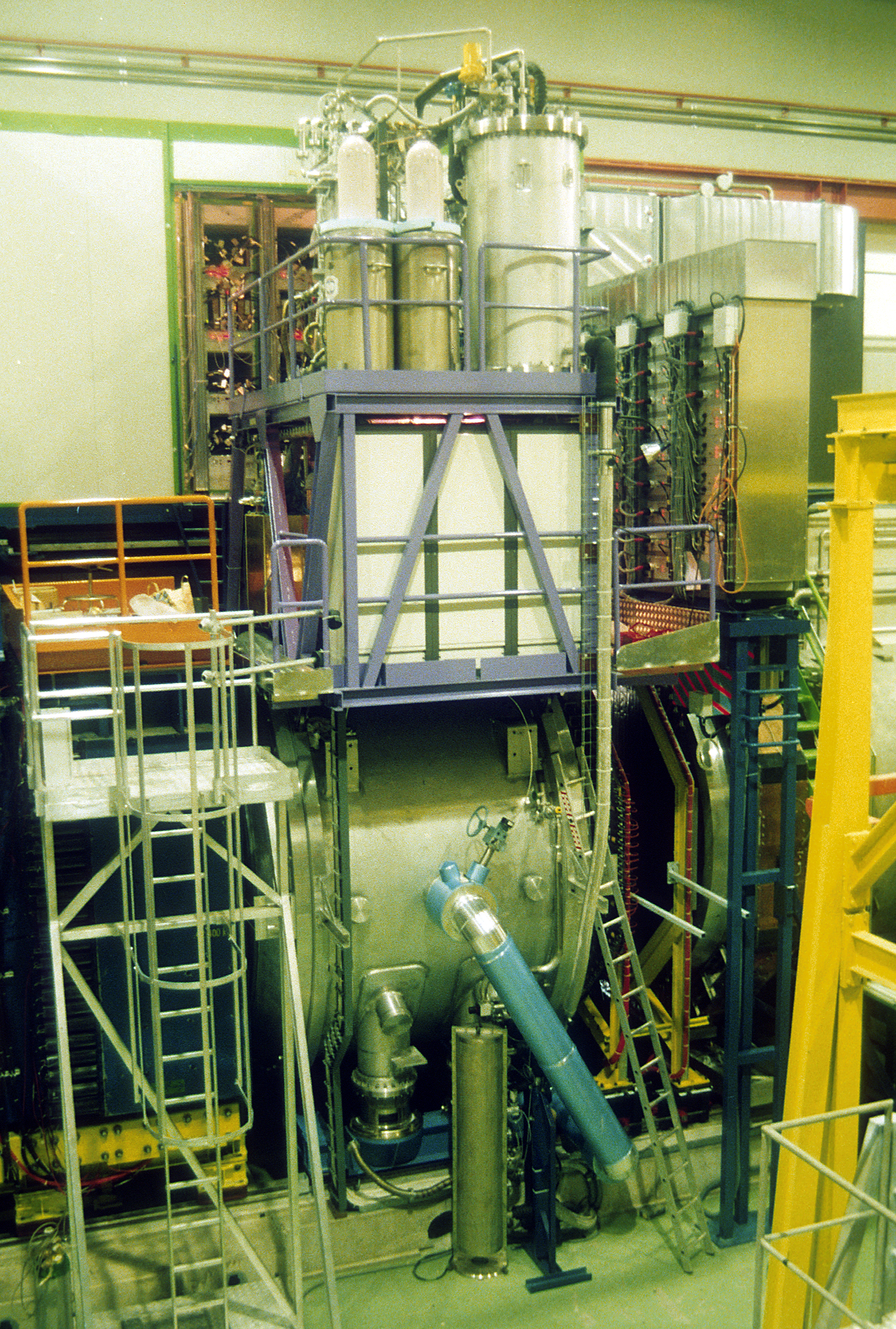NA48 experiment on:
[Wikipedia]
[Google]
[Amazon]
 The NA48 experiment was a series of
The NA48 experiment was a series of
NA48 websiteThe experiments NA48 and NA62 at CERNCERN-NA-048
experiment record on INSPIRE-HEP CERN experiments Particle experiments {{particle-stub
 The NA48 experiment was a series of
The NA48 experiment was a series of particle physics
Particle physics or high energy physics is the study of fundamental particles and forces that constitute matter and radiation. The fundamental particles in the universe are classified in the Standard Model as fermions (matter particles) an ...
experiments in the field of kaon
KAON (Karlsruhe ontology) is an ontology infrastructure developed by the University of Karlsruhe and the Research Center for Information Technologies in Karlsruhe.
Its first incarnation was developed in 2002 and supported an enhanced version of ...
physics being carried out at the North Area of the Super Proton Synchrotron at CERN. The collaboration involved over 100 physicists mostly from Western Europe
Western Europe is the western region of Europe. The region's countries and territories vary depending on context.
The concept of "the West" appeared in Europe in juxtaposition to "the East" and originally applied to the ancient Mediterranean ...
and Russia
Russia (, , ), or the Russian Federation, is a transcontinental country spanning Eastern Europe and Northern Asia. It is the largest country in the world, with its internationally recognised territory covering , and encompassing one-eig ...
.
The construction of the NA48 experimental setup took place early 1990s. The primary physics goal – the search for direct CP violation
In particle physics, CP violation is a violation of CP-symmetry (or charge conjugation parity symmetry): the combination of C-symmetry (charge symmetry) and P-symmetry ( parity symmetry). CP-symmetry states that the laws of physics should be th ...
– was inherited from the predecessor NA31 experiment. The physics data taking runs took place between 1997 and 2001. The discovery of the phenomenon of direct CP violation, one of the most important experimental results obtained at CERN, was announced by the collaboration in 1999. The publication of the final result was made in 2001. In addition the experiment made a contribution to studies of rare decays of neutral kaon
KAON (Karlsruhe ontology) is an ontology infrastructure developed by the University of Karlsruhe and the Research Center for Information Technologies in Karlsruhe.
Its first incarnation was developed in 2002 and supported an enhanced version of ...
s.
The following stage of the experiment (NA48/1) was carried out in 2002 and was devoted to high precision study of rare decays of neutral kaons and hyperon
In particle physics, a hyperon is any baryon containing one or more strange quarks, but no charm, bottom, or top quark. This form of matter may exist in a stable form within the core of some neutron stars. Hyperons are sometimes generically re ...
s. The next stage (NA48/2) was carried out in 2003–2004 and was dedicated to a large programme of studies of properties of charged kaons, including the search of direct CP violation, studies of rare decays of the charged kaon, and low-energy QCD
In theoretical physics, quantum chromodynamics (QCD) is the theory of the strong interaction between quarks mediated by gluons. Quarks are fundamental particles that make up composite hadrons such as the proton, neutron and pion. QCD is a ty ...
using final state rescattering.
The successor of NA48 is the NA62 experiment
The NA62 experiment (known as P-326 at the stage of proposal) is a fixed-target particle physics experiment in the North Area of the SPS accelerator at CERN. The experiment was approved in February 2007. Data taking began in 2015, and the exper ...
, which started data collection in 2015 and is dedicated to further studies of rare decays of the charged kaon.
See also
* NA31 experiment *NA62 experiment
The NA62 experiment (known as P-326 at the stage of proposal) is a fixed-target particle physics experiment in the North Area of the SPS accelerator at CERN. The experiment was approved in February 2007. Data taking began in 2015, and the exper ...
External links
NA48 website
experiment record on INSPIRE-HEP CERN experiments Particle experiments {{particle-stub